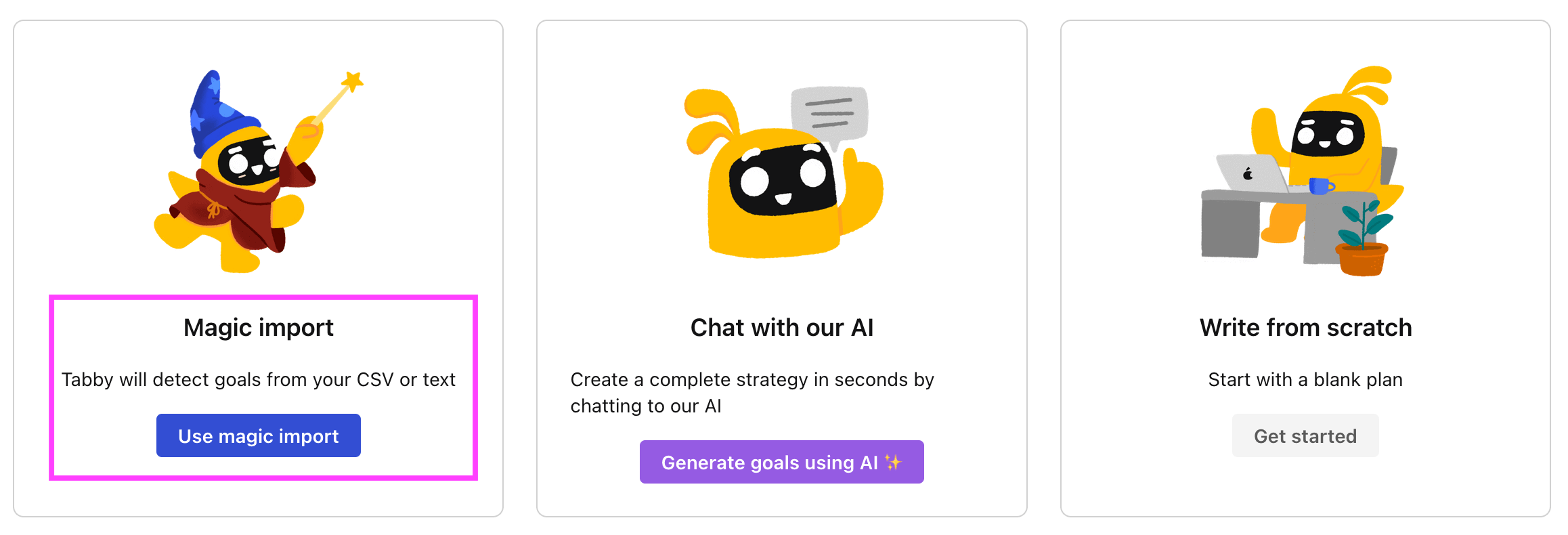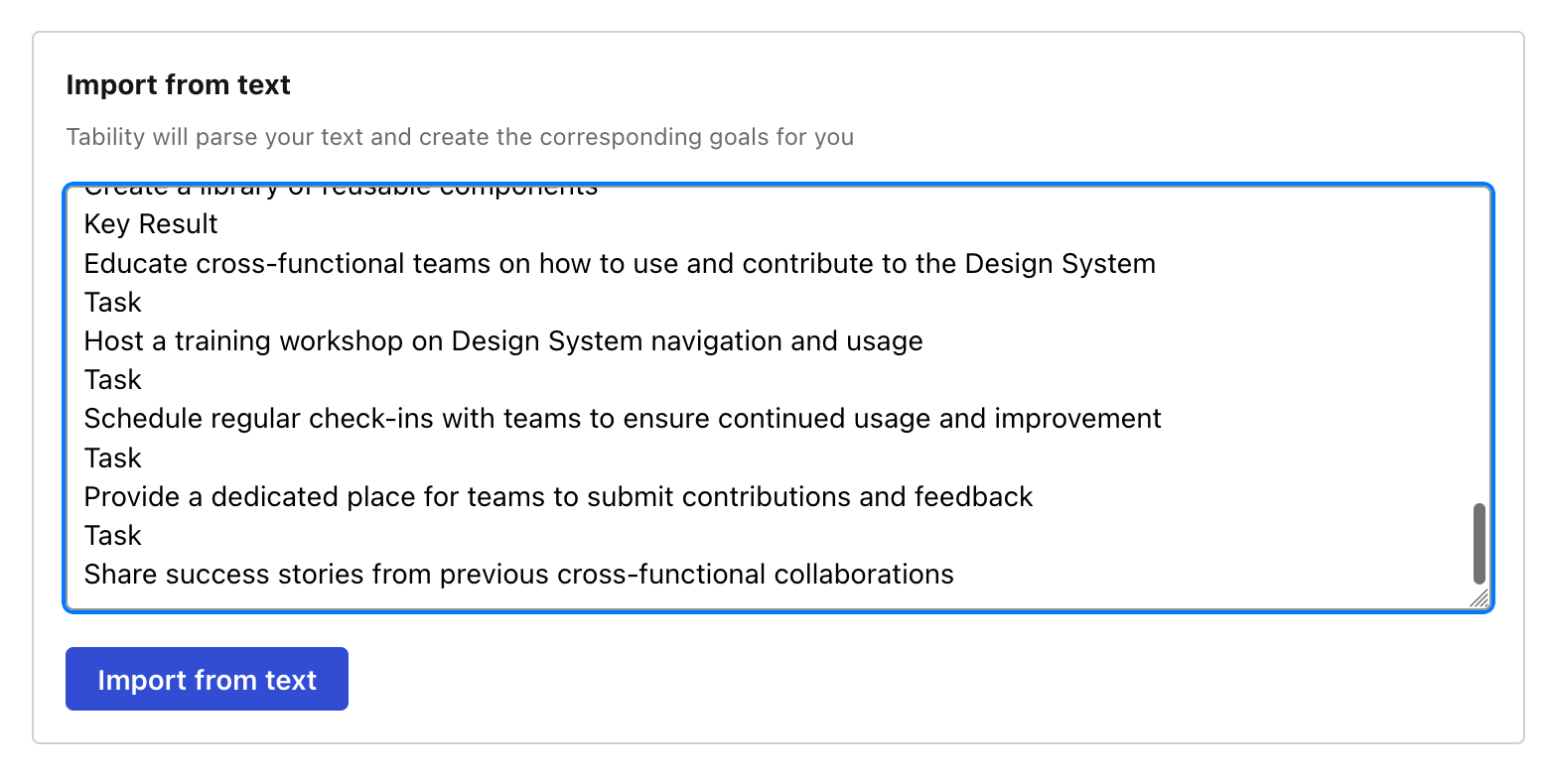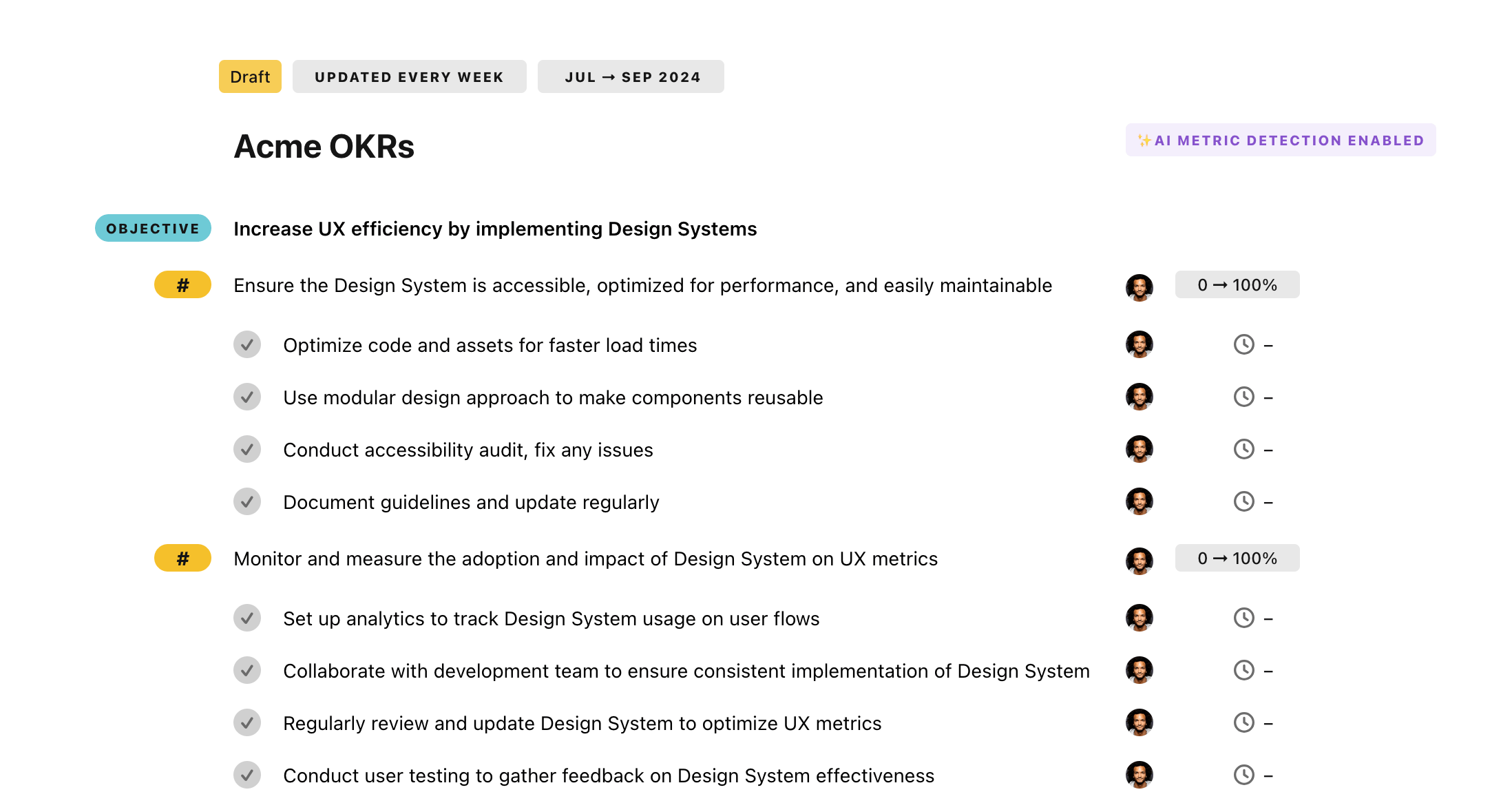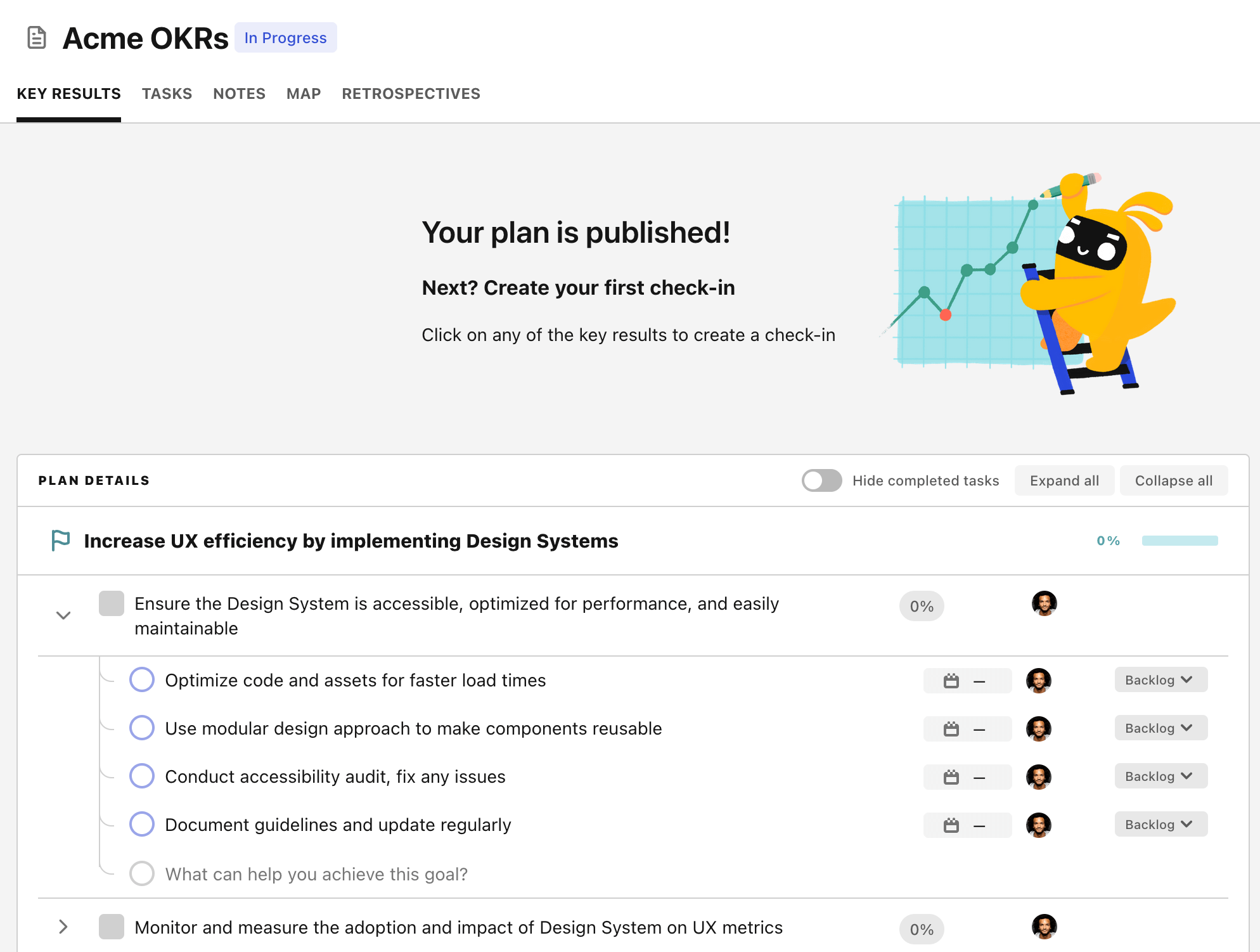OKR template to boost Site Traffic
Your OKR template
The first objective looks at enhancing user experience and reducing bounce rates by improving the website loading speed. To achieve this, several initiatives such as using a CDN, enabling browser caching, optimizing images, and minifying CSS and JavaScript files have been outlined.
The aim of the second objective is to increase traffic from social media channels. The initiatives listed focus on creating engaging content, researching the audience, analyzing campaign performance, and utilizing social media advertising. Meanwhile, the third objective targets referral traffic through guest blogging and collaborations, with initiatives involving tracking referral traffic, identifying blogging platforms, and developing engaging content.
Lastly, the objective is to boost organic search traffic through optimized website content and effective keyword usage. Initiatives such as optimizing existing content, in-depth keyword research, implementing backlink-building strategies, and regularly creating fresh content make up this strategy.
ObjectiveBoost Site Traffic
KRImprove website loading speed by 30% to enhance user experience and reduce bounce rates
Utilize a content delivery network (CDN) to serve website content faster to users worldwide
Enable browser caching to store static resources locally and speed up subsequent page visits
Optimize images by compressing, resizing, and converting to a more web-friendly format
Minify CSS and JavaScript files to reduce their file size and improve loading speed
KRGrow social media traffic by 25% through targeted campaigns and compelling content
Create engaging and shareable content tailored to the identified target audience
Conduct in-depth audience research to identify target demographics and interests
Analyze and optimize campaign performance using analytics tools for continuous improvement
Utilize social media advertising to reach a wider audience and increase visibility
KRAchieve a 15% increase in referral traffic by actively engaging in guest blogging and collaborations
Regularly track and analyze referral traffic data to monitor progress and identify areas for improvement
Research and identify popular guest blogging platforms and collaboration opportunities
Develop high-quality, engaging blog posts and content for guest blogging and collaborations
Reach out to potential partners and pitch guest blogging and collaboration ideas
KRIncrease organic search traffic by 20% by optimizing website content and keywords
Optimize existing website content by incorporating identified keywords and improving metadata
Conduct an in-depth keyword research to identify high-potential and relevant keywords
Implement a backlink-building strategy to improve website authority and increase organic search rankings
Regularly create and publish fresh, high-quality content that is optimized for targeted keywords
How to edit and track OKRs with Tability
You'll probably want to edit the examples in this post, and Tability is the perfect tool for it.
Tability is an AI-powered platform that helps teams set better goals, monitor execution, and get help to achieve their objectives faster.
With Tability you can:
- Use AI to draft a complete set of OKRs in seconds
- Connect your OKRs and team goals to your project
- Automate reporting with integrations and built-in dashboard
Instead of having to copy the content of the OKR examples in a doc or spreadsheet, you can use Tability’s magic importer to start using any of the examples in this page.
The import process can be done in seconds, allowing you to edit OKRs directly in a platform that knows how to manage and track goals.
Step 1. Sign up for a free Tability account
Go tohttps://tability.app/signup and create your account (it's free!)
Step 2. Create a plan
Follow the steps after your onboarding to create your first plan, you should get to a page that looks like the picture below.

Step 3. Use the magic importer
Click on Use magic import to open up the Magic Import modal.
Now, go back to the OKR examples, and click on Copy on the example that you’d like to use.

Paste the content in the text import section. Don’t worry about the formatting, Tability’s AI will be able to parse it!

Now, just click on Import from text and let the magic happen.

Once your example is in the plan editor, you will be able to:
- Edit the objectives, key results, and tasks
- Click on the target 0 → 100% to set better target
- Use the tips and the AI to refine your goals
Step 4. Publish your plan
Once you’re done editing, you can publish your plan to switch to the goal-tracking mode.

From there you will have access to all the features that will help you and your team save hours with OKR reporting.
- 10+ built-in dashboards to visualise progress on your goals
- Weekly reminders, data connectors, and smart notifications
- 9 views to map OKRs to strategic projects
- Strategy map to align teams at scale